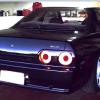Announcements
-
Similar Content
-
Latest Posts
-
I removed the IACV, cleaned it and reinstalled. I found a video on youtube that helped with the whole process, the guy then said the idle needed to be set, so the process was to get the vehicle up to operating temperature, unplug the TPS, set the idle screw in the IACV so the RPMs were around 600, then plug the TPS back in. After I reinstalled the IACV, the car started (because, it was a cold start), once it warmed up, the car died, I adjusted the idle screw to see if that helped anything, it did not, I had to wait about 3-5 minutes, then the car would start back up. Only to shortly cut out, and only crank. I loosened the TPS to see if adjusting that would do anything, and when I would rotate the sensor clockwise, there was a humming noise, but it would go away when I got the sensor in the horizontal position. It only made the hum noise with the key on. What do you guys think? 20250414_172604.mp4
-
By Murray_Calavera · Posted
Quick update. The engine grounding strap was replaced, the engine is now happily running. Tested the voltage drop before replacing the strap, was about 1.2ish volts down between engine to battery, chassis to battery. With the new grounding strap, pretty much no voltage drop at all. -
I was chatting with an ex SAU person who is involved in chooning euros now. He was saying the factory cars like Audi VW etc have something like 2000 tables that the ECU uses for getting everything "just right". Compare that back to any aftermarket ECU, and you'd be hard pressed to surpass 50 lookup tables. Even the Ford Barra engine has a few hundred lookup tables to run it (and they're still working some tables out too!)
-
Grab a temp probe, and probe each exhaust inlet runner with it sitting idling. Each one should be pretty darn close to the same temp. If you've got some reading higher or lower than the others, it's likely either air flow isn't equal, or your injectors aren't equal to each other. The other things to check, is from the wiring changes that were made, were any earth's or grounds moved/changed. Lastly, for the strut brace issue. It's not perfect, but can you get away with slipping a washer or two under the strut brace to raise it, and it still clean the bonnet? If you can, work out the height you need, that the motor can't torque up into, and get a spacer made for each side.
-







Recommended Posts
Create an account or sign in to comment
You need to be a member in order to leave a comment
Create an account
Sign up for a new account in our community. It's easy!
Register a new accountSign in
Already have an account? Sign in here.
Sign In Now